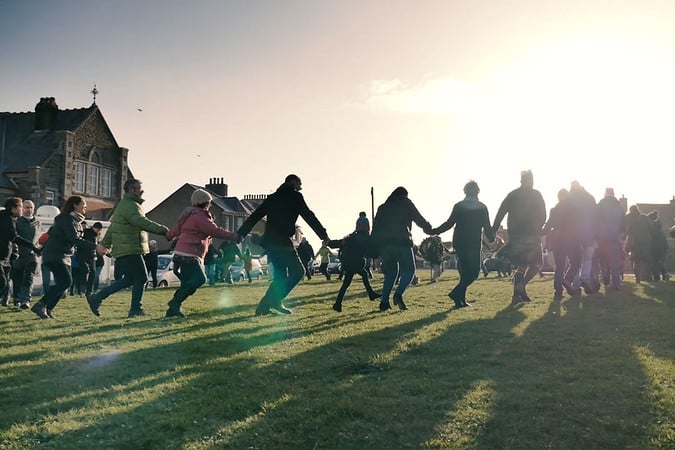Hunting the Wren is a St. Stephen's Day tradition which is older than written records and has an integral role in the island's historic culture. But do you know where it comes from?
The island's age-old tradition is still practised to this day, with one account written in 1720, even hailing it ‘time immemorial’.
What is hunting the Wren?
Hunting the Wren is a ritual that consists of groups of people singing and dancing around a decorated Wren pole, which happens in various places on the island.
The traditional song tells the tale of the 'king of all birds.'
A Manx folklore tale tells the story of an enchanting woman, known as the queen of the fairies. The fairy queen goes by the name of ‘Tehi Tegi’, which roughly translates to ‘beautiful gatherer’ in Brythonic - the Manx spoke Brythonic before they switched to Gaelic.
Tehi Tegi lures the men of the island with her beauty, causing them to fall deeply in love with her. Desperate to marry her they left behind their duties, fields and land to pursue the beautiful fairy queen.
Legend has it that once the men had been lured, Tehi Tegi would harm them, some accounts even believe the men would be drowned. The angry locals wanted justice.
Tehi Tegi learned of these plans and decided she must flee to escape punishment. She's thought to have turned herself into a wren and flew from the island.
However, once a year on December 26, she returns to the island and is hunted by locals looking to avenge Tehi Tegi's victims.
Up until the late 1800s, real wrens were used in the ritual, but now fake wrens can be seen upon the poles in the centre of the dancing and singing.
For centuries, the tradition was widely practised across the Europe, but interest began declining in about the 1900s. Since then, the Isle of Man is one of the only places in the world that still ‘hunts the wren'.
In 2018, there was a £2 coin, released by Isle of Man Stamps and Coins, depicting a wren alongside the Three Legs of Man. The coin represents the extent of the rivival this ancient tradition has seen in recent years.




.jpeg?width=209&height=140&crop=209:145,smart&quality=75)
Comments
This article has no comments yet. Be the first to leave a comment.